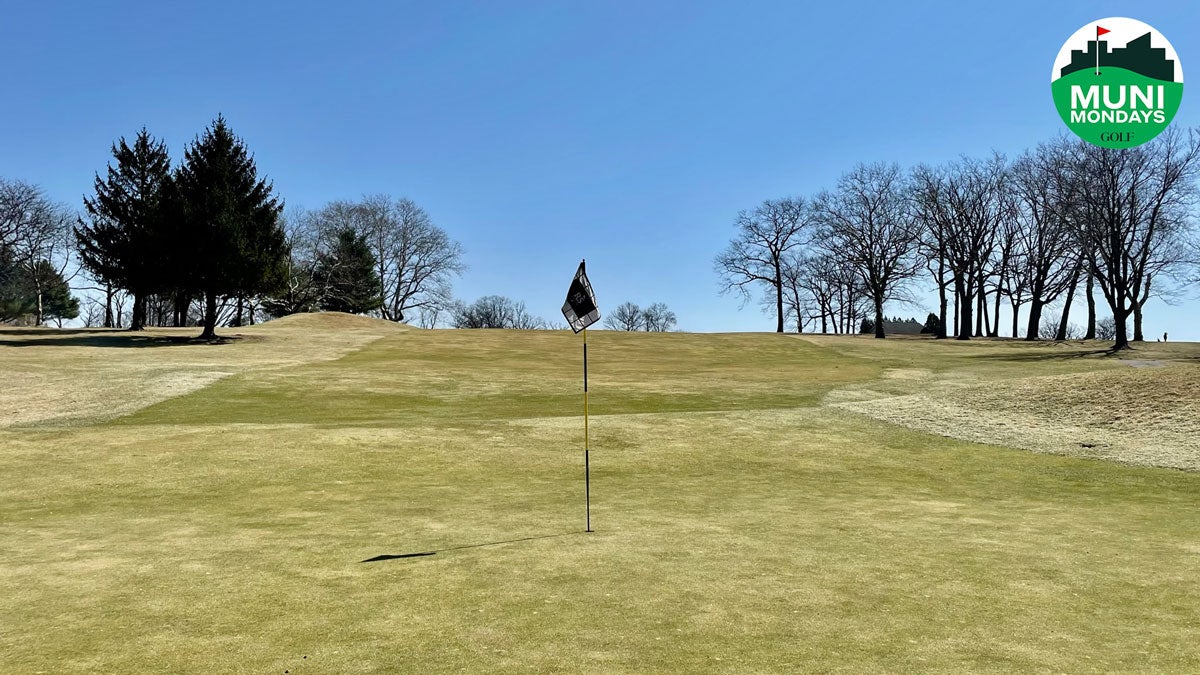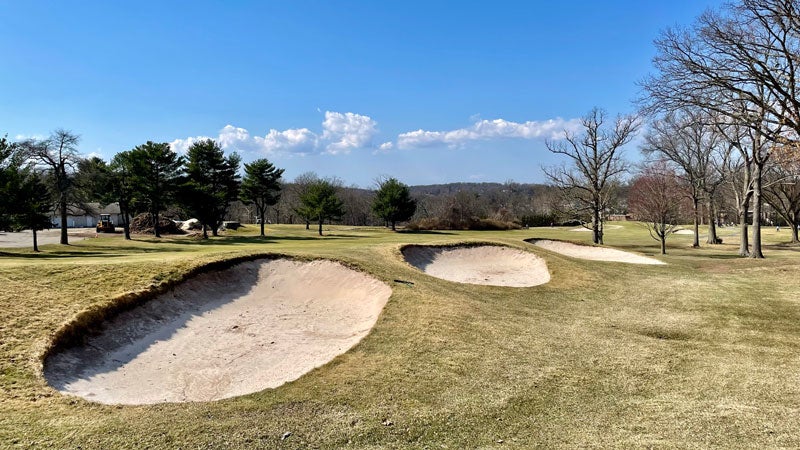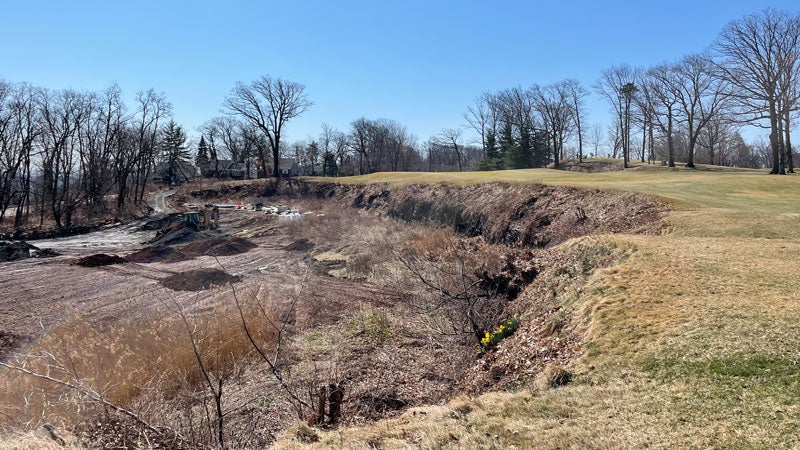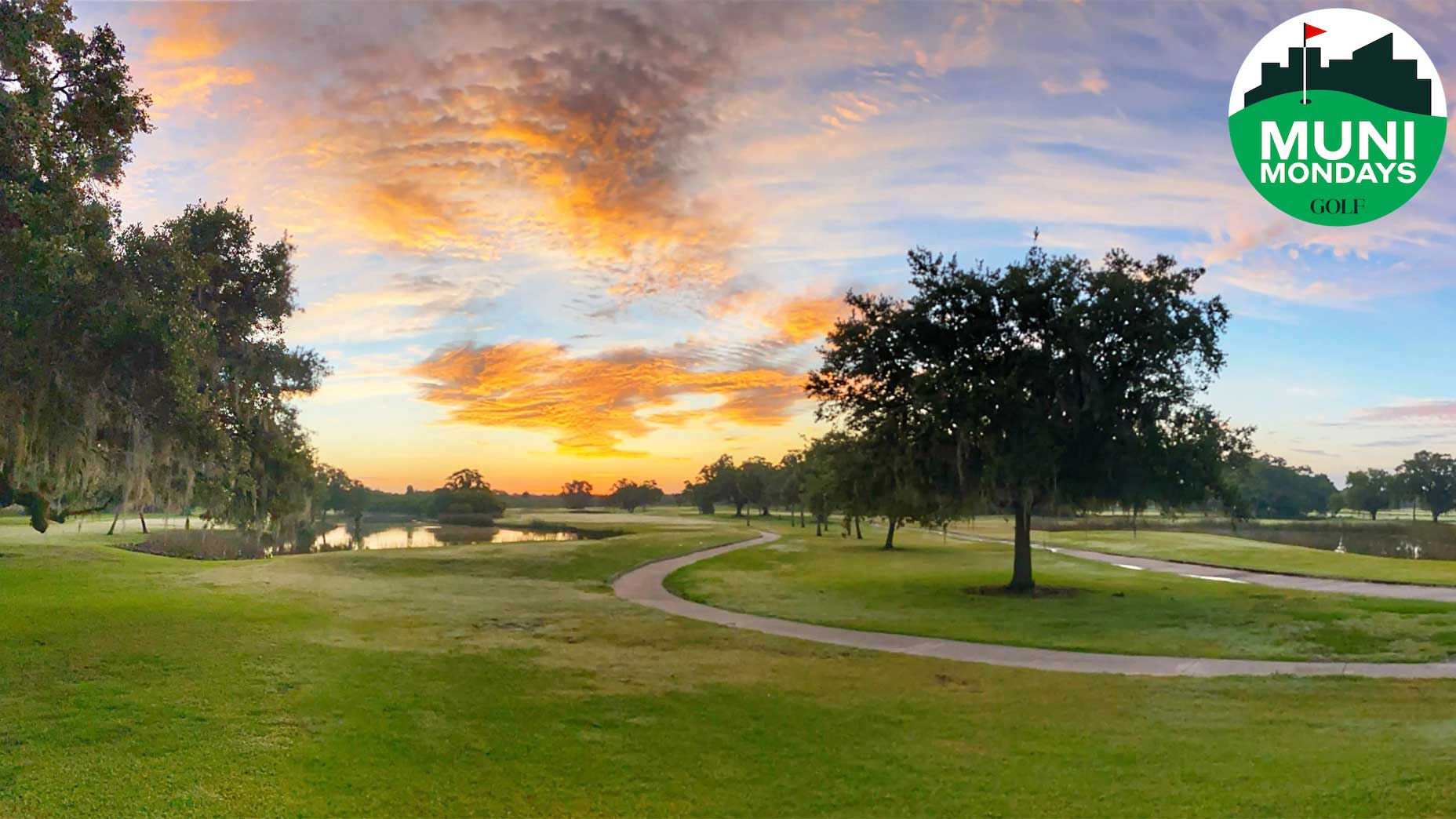This five-star muni is such a good value its regulars want to keep it a secret

Rock Spring sits on a rolling plot in West Orange, N.J.
Alan Bastable
It’s hard to keep a secret a secret in the New York metropolitan area. Too many prying eyes, too many perked ears, too many trigger-happy Twitterers. If something is worthy of praise — a restaurant, a band, yep, even a golf course — word in the tri-state region spreads quickly, and alas the secret is no longer.
Which makes Rock Spring Golf Club, in West Orange, N.J. — less than 20 miles west of Midtown Manhattan — such an anomaly.
Sure, some local golfers know the place, and some golf-course architecture enthusiasts, too. But since it was converted from a private club to a municipally owned course in 2019, Rock Spring — despite its Big Apple skyline views! — largely has remained a sleeping giant.
“That’s the cool thing about it: We’re three years in now and there’s still a lot of people out there who don’t know about us,” Chris Parker, Rock Spring’s general manager, told me the other day. “They still think it’s a private club, or they’ve driven past it and aren’t really sure what it is.”


What it is is one of two publicly accessible Seth Raynor designs in the United States, non-resort division. (The course was actually built by Raynor’s top lieutenant, Charles Banks, but the design was conjured by Raynor, and his fingerprints are everywhere.)
If Raynor’s name doesn’t mean anything to you, that’s cool. Just know that Rock Spring is a joy to play, with endless intrigue, charm and variety. It’s also one of the great bargains on the Met Area golf scene. When I played it a couple of weeks ago, the walking fee was all of $40. Beginning next month, those rates will jump to $52 during the week and $92 on the weekends, but even those fees do little to diminish Rock Spring’s value.
If Raynor’s name does mean something to you, by now you might be sitting on the edge of your seat. As you should be. Rock Spring is that good. Raynor’s hallmark touches — a redan, a double-plateau green, a “Short” hole — are all over the hilly site. From the moated (by sand) green at the par-3 6th to the risk-reward drive created by three diagonally positioned fairway bunkers on the par-4 11th to pushed-up greens and steep-faced bunkers, there’s a fun surprise or challenge waiting around every corner. No public course in the Met Area is more interesting or memorable, certainly not among those this correspondent has played.
In the United States, sadly most “template” holes — or those inspired by iconic designs from the British Isles and imported stateside by C.B. Macdonald, with whom Raynor collaborated — are hidden behind the hedges of private clubs. Rock Spring is that rare American design that exposes template golf to the masses. The redan hole, the par-3 3rd, is a standout and not just because you can see the monoliths of Manhattan from the tee. From the tips, it’s a 200-yard shot across a scruffy ravine, to a green that runs diagonally and is pitched from front to back. The hole is both daunting and beautiful, even with construction vehicles parked in the chasm below.
When I visited with a neighborhood friend on a weirdly warm March afternoon, I didn’t want the round to end. The other player with whom we were grouped — an investment banker and Rock Spring regular from Hoboken — had other concerns. He knew my profession.
“Don’t you dare write about this place and blow us up,” he said as we waited to hit our tee shots up the 18th fairway. He was only half-joking. That’s the thing about Rock Spring — its regulars know how good they have it and understandably want to keep the secret to themselves. Added Parker: “People who’ve discovered it, they’re like, ‘Oh we don’t want it overcrowded. It’s already hard to get a tee time.’”

Much of Rock Spring’s low profile is rooted in its history. For 93 years, it was a private club; an empty swimming pool and stately locker room serve as reminders. But over time, the club succumbed to financial pressures. In 2015, Montclair Golf Club, in a nearby town, assumed Rock Spring’s mortgage and made the club a subsidiary of Montclair. That experiment lasted only three years, at which point West Orange Township, eager to preserve the green space, acquired the property for $11 million. That was in 2019.
The town hired KemperSports to manage the course, and within its first year under the new arrangement, Rock Spring turned a profit, according to figures shared in a West Orange city council meeting. Today, business it still brisk.
Some of the clientele are aware of the architectural muscle of the course, but likely just as many are not, Parker said.
“Part of strategy this year and moving forward is educating people on what it means to play template golf,” he said. “A lot of people don’t really know what that means. So we’re planning to put up some signage and do some things with scorecards and yardage books where we can help educate people about the importance and significance of some of the structural designs out there.
“But that’s one of the beautiful things about the place: You could play the course and not know anything about the design and still have a great time. It’s a second-shot golf course. You can’t overpower it. You have to pick and choose and think your way around. You can be a high-handicapper and enjoy it, you can be a low-handicapper and enjoy it.”
Or a mid-handicapper. I can report that firsthand.











